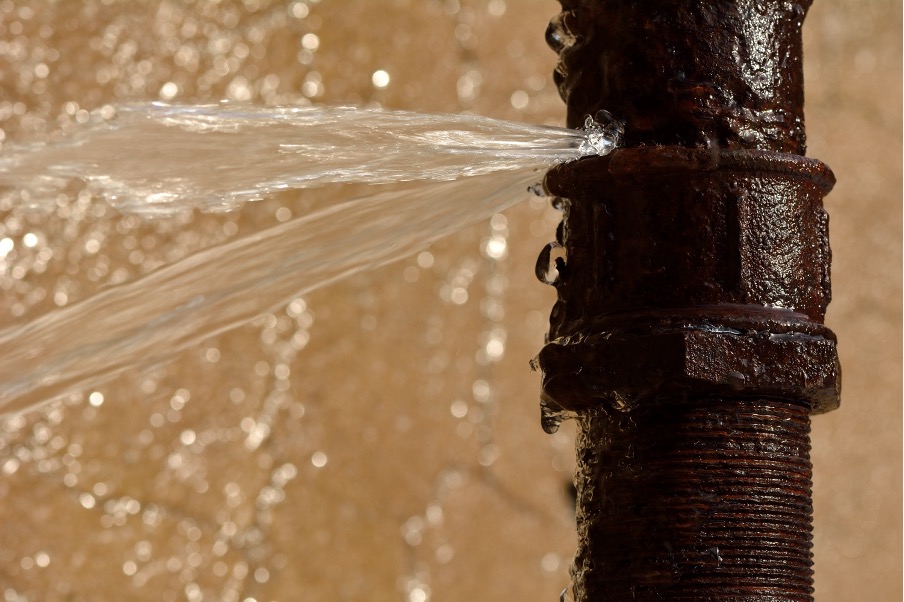6 Methods to Detect Covert Water Line Leaks Effectively
6 Methods to Detect Covert Water Line Leaks Effectively
Blog Article
Just how do you feel on the subject of Hacks to detect leaks?

Early detection of dripping water lines can alleviate a potential calamity. Some tiny water leakages might not be visible.
1. Check Out the Water Meter
Every home has a water meter. Examining it is a surefire manner in which helps you find leakages. For starters, turn off all the water sources. Make sure no person will flush, make use of the faucet, shower, run the washing machine or dishwashing machine. From there, most likely to the meter and also watch if it will alter. Given that nobody is utilizing it, there ought to be no movements. That indicates a fast-moving leak if it moves. Similarly, if you detect no changes, wait an hour or two and examine back once more. This implies you may have a slow-moving leakage that might also be below ground.
2. Check Water Consumption
Examine your water expenses and also track your water intake. As the one paying it, you need to observe if there are any kind of discrepancies. If you spot sudden changes, regardless of your intake coinciding, it indicates that you have leakages in your plumbing system. Bear in mind, your water expense need to fall under the same range each month. An unexpected spike in your expense indicates a fast-moving leakage.
A constant rise every month, even with the same routines, reveals you have a slow leak that's likewise gradually rising. Call a plumber to completely inspect your residential property, specifically if you really feel a cozy location on your flooring with piping below.
3. Do a Food Coloring Test
When it concerns water intake, 30% originates from bathrooms. Test to see if they are running appropriately. Decrease flecks of food color in the container as well as wait 10 minutes. There's a leak in between the storage tank and dish if the color in some way infiltrates your bowl during that time without flushing.
4. Asses Outside Lines
Do not fail to remember to check your exterior water lines as well. Should water permeate out of the connection, you have a loose rubber gasket. One little leak can waste loads of water and also spike your water expense.
5. Examine and Evaluate the Situation
Homeowners need to make it a routine to inspect under the sink counters and also also inside cupboards for any kind of bad odor or mold development. These two red flags show a leak so punctual attention is required. Doing routine assessments, even bi-annually, can save you from a major issue.
Examine for discolorations as well as deteriorating as a lot of pipes as well as appliances have a life expectations. If you presume dripping water lines in your plumbing system, don't wait for it to rise.
Early detection of dripping water lines can reduce a prospective calamity. Some small water leakages may not be visible. Examining it is a guaranteed method that assists you find leakages. One little leakage can waste loads of water as well as surge your water costs.
If you presume dripping water lines in your plumbing system, don't wait for it to rise.
WARNING SIGNS OF WATER LEAKAGE BEHIND THE WALL
PERSISTENT MUSTY ODORS
As water slowly drips from a leaky pipe inside the wall, flooring and sheetrock stay damp and develop an odor similar to wet cardboard. It generates a musty smell that can help you find hidden leaks.
MOLD IN UNUSUAL AREAS
Mold usually grows in wet areas like kitchens, baths and laundry rooms. If you spot the stuff on walls or baseboards in other rooms of the house, it’s a good indicator of undetected water leaks.
STAINS THAT GROW
When mold thrives around a leaky pipe, it sometimes takes hold on the inside surface of the affected wall. A growing stain on otherwise clean sheetrock is often your sign of a hidden plumbing problem.
PEELING OR BUBBLING WALLPAPER / PAINT
This clue is easy to miss in rooms that don’t get much use. When you see wallpaper separating along seams or paint bubbling or flaking off the wall, blame sheetrock that stays wet because of an undetected leak.
BUCKLED CEILINGS AND STAINED FLOORS
If ceilings or floors in bathrooms, kitchens or laundry areas develop structural problems, don’t rule out constant damp inside the walls. Wet sheetrock can affect adjacent framing, flooring and ceilings.
https://www.servicemasterbyzaba.com/blog/how-to-detect-water-leakage-in-walls/

Do you like reading about Detecting hidden plumbing leaks? Put a remark down below. We'd be delighted to find out your opinions about this posting. We are looking forward that you come back again in the future. Sharing is good. You just don't know, you might be doing someone a favor. I cherish reading our article about Hacks to detect leaks.
Go Services Report this page